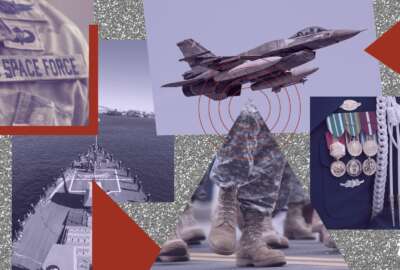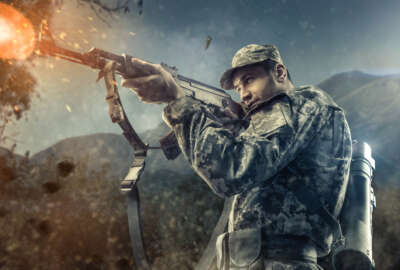
Army training looks to a virtual future
TRADOC looks to a more nuanced synthetic training experience to prepare soldiers for battle.
If the Army’s top training officers are to meet the demands of ever-evolving multi-domain operations and Joint All-Domain Command and Control, they need to change their programs to adapt to more sophisticated battle environments. That’s the message coming from Army Futures Command and its generals.
Lt. Gen. Maria Gervais, deputy commanding general and chief of staff at Army Training and Doctrine Command (TRADOC), said training has to happen from a collective standpoint to improve integration, and soldiers need to experience a more realistic battle simulation.
“A lot of our training is more from an analog standpoint, versus being able to capitalize in a digital space. In our live environment, like combat training centers, or home station, that live environment is very constrained,” she told a recent conference organized by AFCEA’s Northern Virginia chapter.
Synthetic training environments offer soldiers training that better mimics the details of a real-life battle. The program has been used for several years, but it is still evolving.
“When you look at the synthetic training environment, we started thinking about the future, we started thinking about sophistication of weapons. We already had things that we can’t train on our installations, because quite frankly, our weapons aren’t that sophisticated,” said Gervais.
The evolution of tactics happening in real time on the battlefields of Ukraine mean the Army has to rethink their own strategies and make adjustments for the immediate future. Much of that involves integrated commands.
“We have an operational environment right now, an operational environment that is evolving and changing so fast, based on the technology that’s available, and the innovation of either our adversaries, or competitors, or even some of our allies, it’s changing so quickly,” Gervais said.
The need for quick change was echoed by Army Futures Command (AFC) Gen. James Rainey.
“The biggest thing is, we’re going to have to build new [Military Occupational Specialties], new skill identifiers. There are clearly some skill sets that we’re going to need. We need now. And we’re going to need for sure in the future that we don’t even have in the Army. So that takes time,” Rainey told an Association of the U.S. Army gathering last week.
As a command that works closely with AFC, TRADOC fine tunes the modernization process AFC wants to incorporate. Rainey said his command needs to start looking at what it will take to prepare the Army for 2040.
The Army released its Field Manual 3.0 last October. It established a multi-domain operations as the Army’s operational concept, “…with a focus on large-scale combat operations against peer adversaries who possess the capability to contest the joint force in all domains,” according to an Army statement.
TRADOC bears responsibility for training soldiers to meet those future goals as outlined by the field manual.
“TRADOC, we kind of oversee all of the proponents and develop the requirements, we partner with Army Futures Command, because they’re focused on the modernization piece, we partner with the synthetic training environment cross functional team, which is part of Army Futures Command,” Gervais said.
The air and ground replicators used at TRADOC attempt to recreate as many details of a real life scenario as possible. Gervais said soldiers who had seen combat duty in Afghanistan were able to point out details that needed to be added to the synthetic environments.
“We have the scenario and it’s up on the screen. OK, it’s like very few people interacting. We want to train soldiers like when we were in Afghanistan. That’s where you have a lot of people, you have donkeys, mules. But normally, when they were training, it’s the most sterile environment there is. And so maybe this will help,” she said.
The model for creating a synthetic training environment is one many of her young soldiers find relatable. Those who spent time playing video games see a familiar environment.
“I think the power of the synthetic environment that we’re trying to create, because it’s based on virtual and gaming. So think “Call of Duty” — now you can take that gaming capability, you can create the physics that you need, it can do all the calculations, and then you can make it as realistic as possible,” Gervais said.
Copyright © 2024 Federal News Network. All rights reserved. This website is not intended for users located within the European Economic Area.
Alexandra Lohr, a former staff member, covered the Defense Department for Federal News Network until September 2023.




